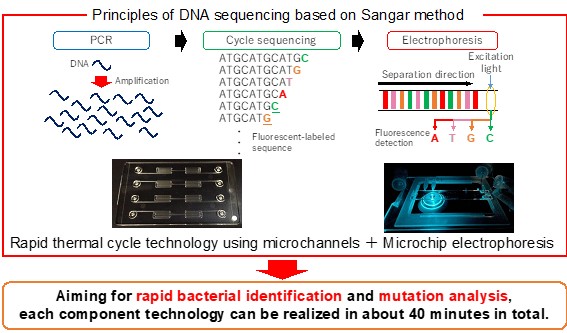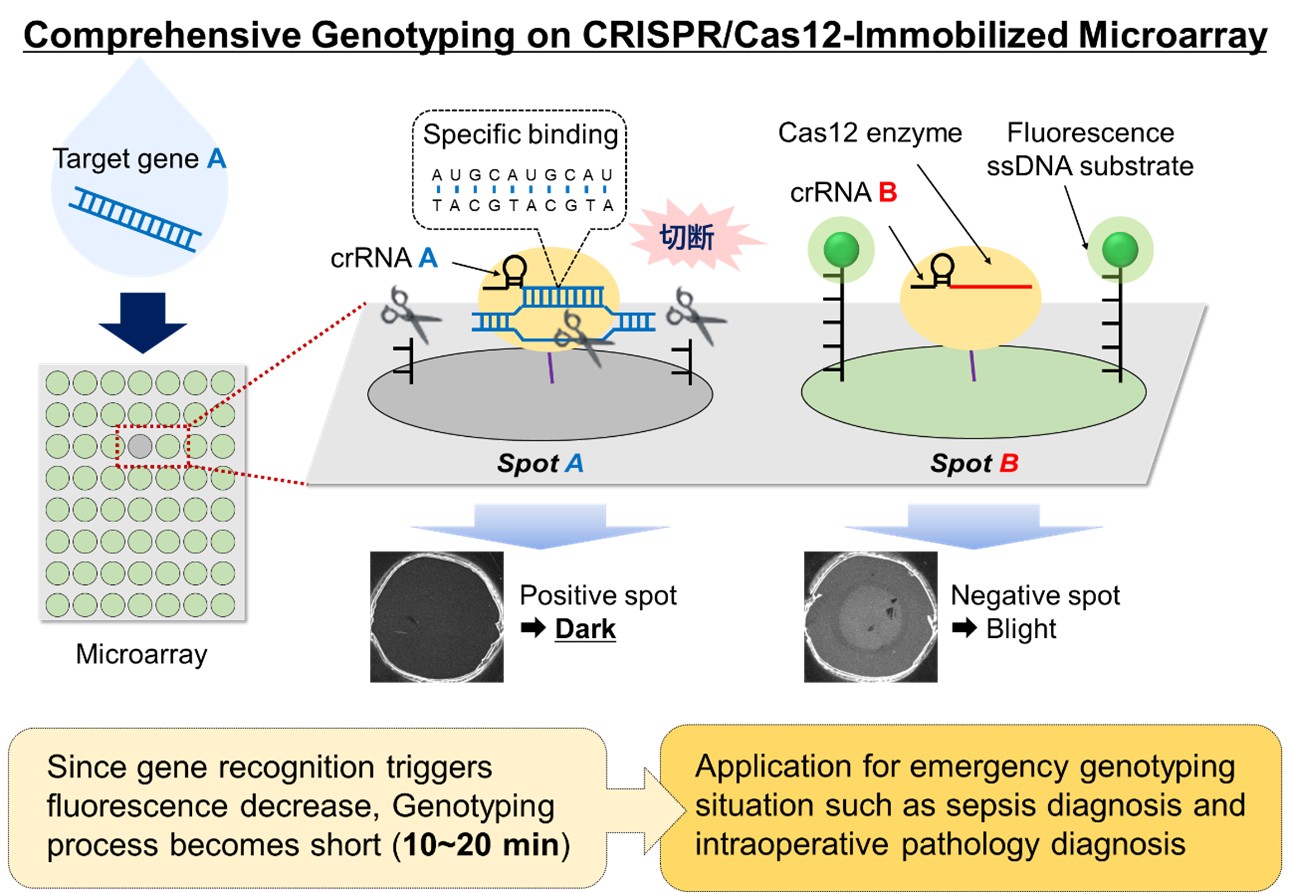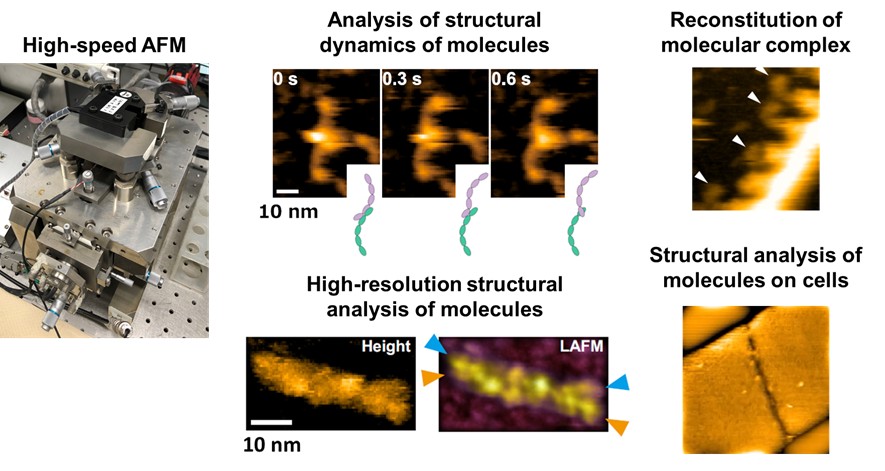Biomolecular Sensing Research Group
Introduction to research
The Biomolecular Sensing Research Group is developing advanced measurement technologies for biomolecules such as genes and proteins, which contain a lot of information. Through the development of these biomolecular measurement technologies, we aim to contribute to rapid testing of infectious diseases and other diseases, as well as to elucidating detailed life phenomena. To achieve this goal, we are conducting research on the following themes.
Development of Innovative Diagnostic Devices for Routine Medical Access
We are advancing research aimed at miniaturizing, integrating, and accelerating the analysis of various biomolecules through the use of microfluidic devices and biosensors fabricated with microfabrication technology. Specifically, we are developing technologies such as high-speed PCR devices capable of rapid detection of genetic material from pathogens, high-speed ELISA devices utilizing antibody-based molecular recognition, and highly sensitive biosensors that exploit enhanced electric fields on nanostructured gold surfaces. Through these innovations, we aim to realize a society in which medical tests currently conducted in hospitals can be performed routinely at home.

Development of a Rapid DNA Sequencer for Rapid Microbial Identification
Sepsis accounts for 20% of the world's deaths, and it is extremely important to administer antibiotics within one hour. However, the current method of identifying bacteria using blood cultures has the problem that it takes several days to determine the results. We are developing a technology for rapid bacterial identification and mutation analysis by speeding up DNA sequencing technology based on the Sanger method using microfluidic technology. Using this technology, we aim to rapidly identify bacteria within one hour, allowing for the administration of appropriate evidence-based antibiotics to sepsis patients within one hour.

CRISPR/Cas12-Immobilized Microarray for Rapid and Comprehensive Genotyping
DNA microarray is useful tool to detect 10 to 10,000 types of gene sequences. However, this genotyping has the drawback of time-consuming process (> 3 hours) due to complicated operations. To achieve rapid genotyping process, we focus on CRISPR/Cas12 system, which rapidly recognizes target gene sequence and generates a signal through allosteric effect, and develop a microarray chip immobilized with CRISPR/Cas12 molecules. In the future, we aim for social implementation of this technology toward emergency genotyping such as sepsis diagnosis and intraoperative rapid pathology diagnosis.

Development of High-speed Atomic Force Microscopy (High-speed AFM)-based Technology for Structural Dynamics Analysis of Biopharmaceuticals and Target Molecule
Biopharmaceutical development requires an understanding of the nanoscale structure and dynamics of the materials and target molecules, and there is a need for technology to analyze the structure and dynamics of molecules in the solution environment in which they function. We are developing techniques to analyze the conformational dynamics of molecules in solution and in environments that mimic those found in living organisms (artificial lipid membranes, cell membranes, etc.), using high-speed atomic force microscopy (high-speed AFM) as the basic technology. By developing technologies to analyze the conformational dynamics of molecules in the environment in which biopharmaceuticals function, we aim to contribute to the development of biopharmaceuticals currently being undertaken by industry and academia.

List of Publications
Staff:
- Shunsuke FURUTANI (Research Group Leader)
- Hidenori Nagai
- Shigetaka Nishiguchi
- Hiroki Shigemori
- Maiko Sasano
- Eiichi Tamiya